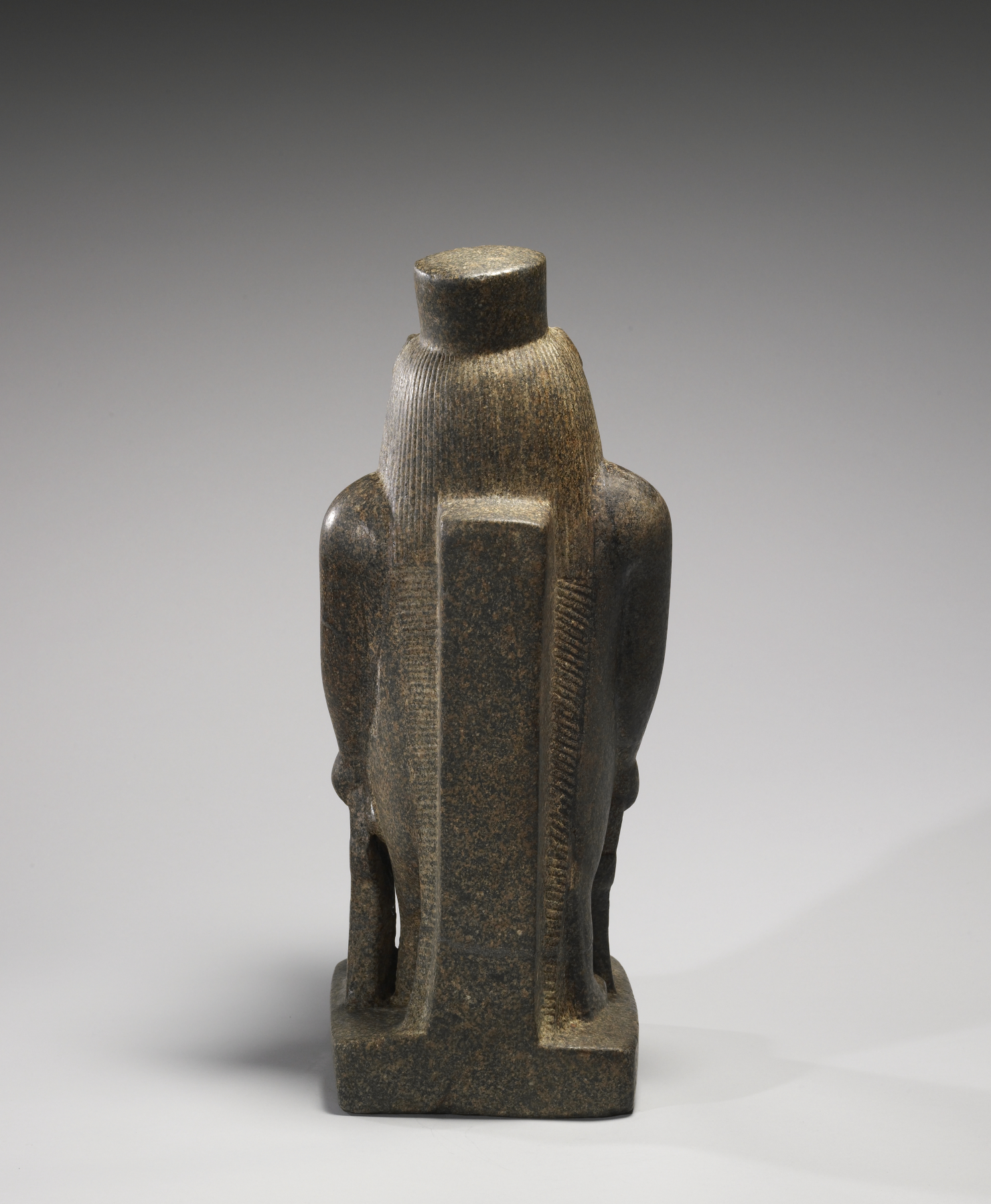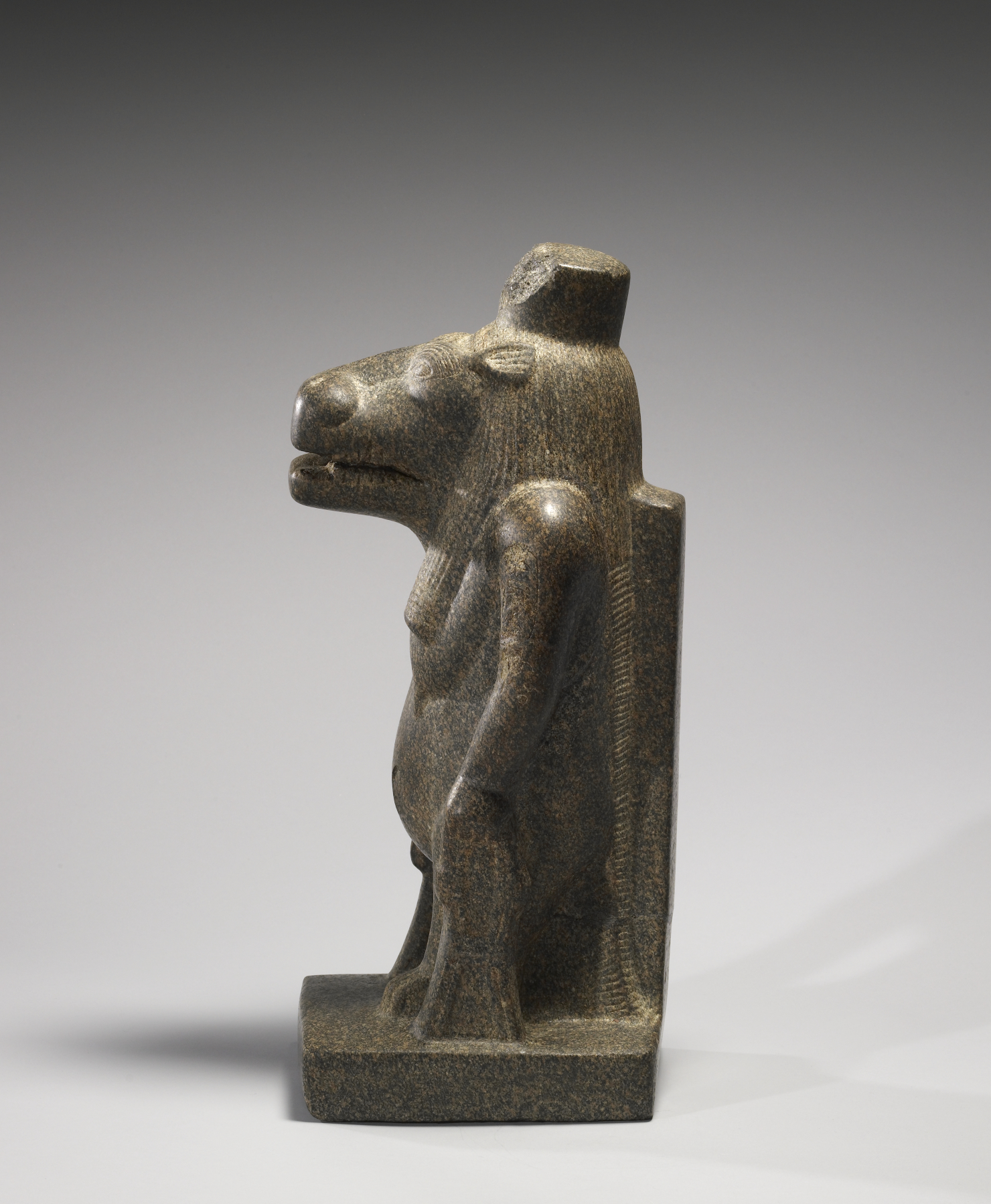Statue of Taweret
(Ancient Egypt and Nubia )
Ancient Egyptians believed the goddess Taweret, whose name translates as "the Great One," offered protection to women during pregnancy and childbirth. She is represented as a hippopotamus with a swollen belly, pendulous human breasts, the limbs of a lion, and the back and tail of a crocodile. Taweret was a benevolent deity and was commonly depicted on amulets. Underscoring her function as a protector, she holds the hieroglyph "sa," meaning protection, in each hand, (the cartouches on her shoulders were added at a later date, and have so far escaped a definitive reading). Although her cult gained great importance, she had no temples of her own.
Provenance
Provenance (from the French provenir, 'to come from/forth') is the chronology of the ownership, custody, or location of a historical object. Learn more about provenance at the Walters.
Dr. Eddé, Alexandria, Egypt; Eddé Collection Sale, Hôtel Drouot, Paris, May 31-June 2, 1911, no. 525; Henry Walters, Baltimore, [date of acquisition unknown] by purchase; Walters Art Museum, 1931, by bequest.
Exhibitions
| 2013-2014 | Egypt’s Mysterious Book of the Faiyum. The Walters Art Museum, Baltimore. |
Conservation
| Date | Description | Narrative |
|---|---|---|
| 10/20/1998 | Examination | survey |
| 10/25/2000 | Treatment | cleaned; repaired; loss compensation |
Geographies
Egypt, Delta (Xoïs) (Place of Origin)
Measurements
H: 20 7/8 x W: 8 7/16 x D: 9 3/4 in. (53 x 21.5 x 24.7 cm)
Credit Line
Acquired by Henry Walters
Location in Museum
Accession Number
In libraries, galleries, museums, and archives, an accession number is a unique identifier assigned to each object in the collection.
In libraries, galleries, museums, and archives, an accession number is a unique identifier assigned to each object in the collection.
22.223








